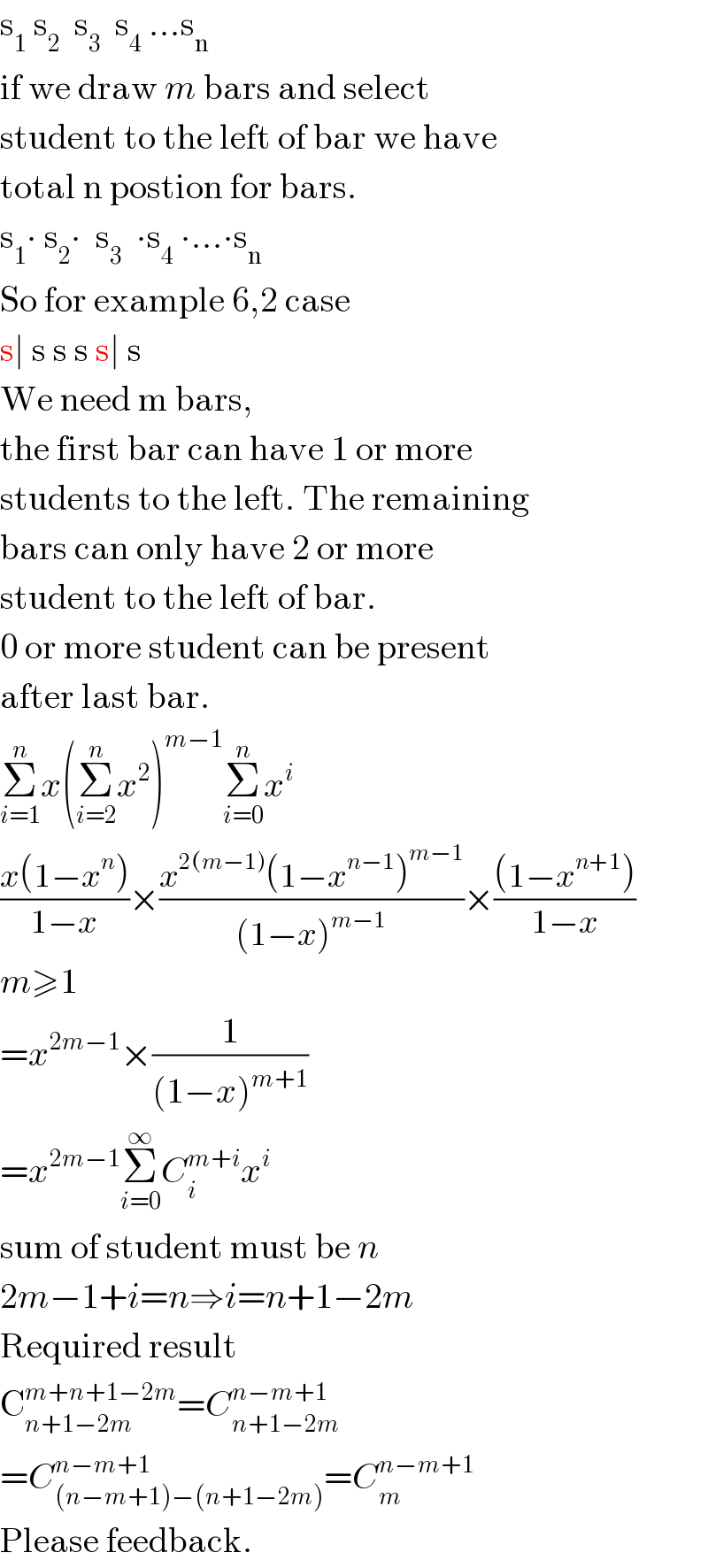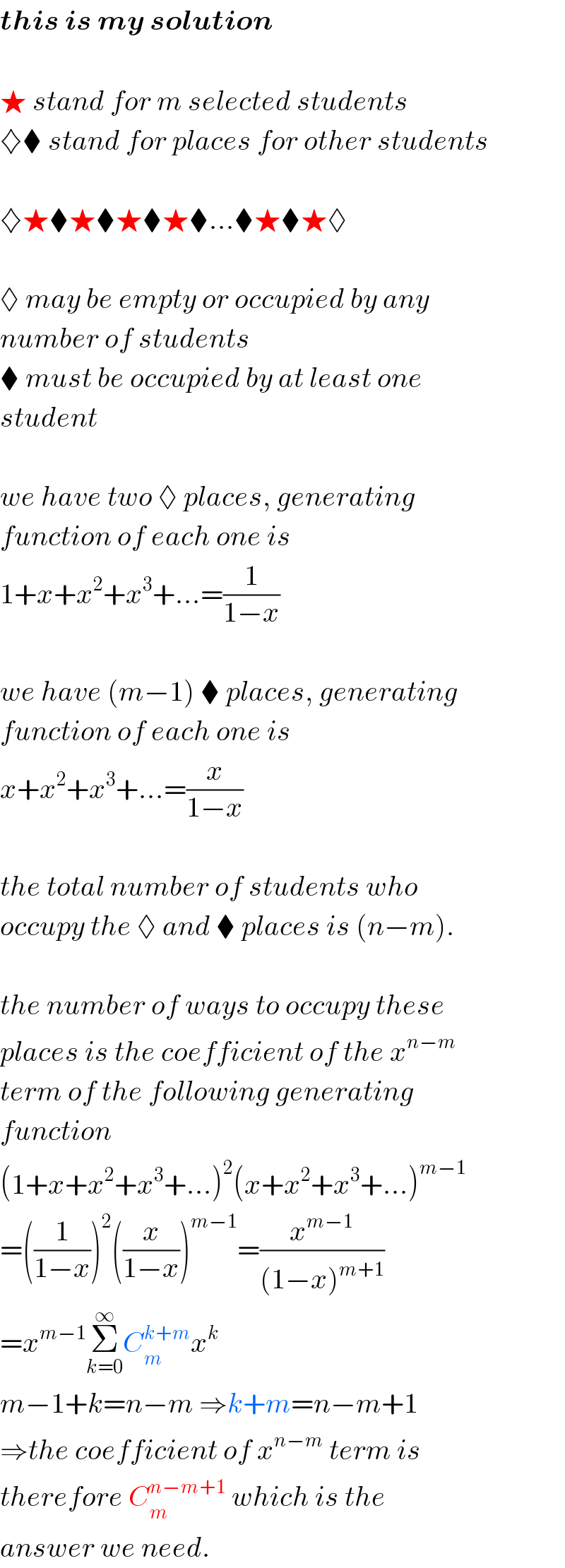
Question and Answers Forum
Previous in Permutation and Combination Next in Permutation and Combination
Question Number 103716 by mr W last updated on 16/Jul/20

Commented by mr W last updated on 16/Jul/20

Commented by prakash jain last updated on 16/Jul/20

Commented by mr W last updated on 16/Jul/20

Answered by mr W last updated on 17/Jul/20

